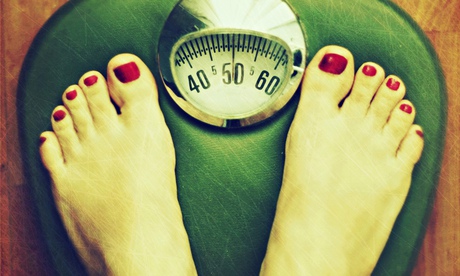
I’m trying to remember how I felt about my body when I was eight. Only I can’t really remember having a body back then. I can remember being a chimpanzee. I can remember being a wrestler, and a vampire, and a sad clown, and a tree, but in none of these guises was my body anything other than an extension of my own mind. It wouldn’t have occurred to me to separate it from what was simply “me” – it was me like my voice was me, like the way I felt about peas was me. Things have changed.
The largest UK study ever on eating disorders in children followed 6,000 kids through their lives and found that at the age of eight 5% of girls (and 3% of boys) were dissatisfied with their body. This dissatisfaction rose as they got older – at 14 it had grown to swallow 32% of girls (and 16% of boys). Bearing in mind this was six years ago, I wonder how today’s eight-year-olds feel.
In 2011 I observed Jo Swinson’s government inquiry into body image, the results of which included the recommendation that lessons in the subject were introduced in primary school. But today, as school obesity-prevention programmes and regular weigh-ins have been rolled out nationally, the author of the new UK study, Nadia Micali, points out that these body-image lessons now carry their own risks. In warning children of the dangers of obesity, are they pushing them too far the other way? “Children in primary schools are given healthy eating classes without even thinking what they might mean,” she said. “Many of those classes have not been tested as scientists might test them.”
On learning that fat is bad, are children who aren’t yet able to fully understand the grey complexities of the subject leaping to the conclusion, then, that thin is good? That to eat healthily you must diet, or feel shame when you have pudding, or strive for there to be less of you standing here than there was last week? Could body image lessons, in fact, help trigger a child’s disordered eating?
One of the conclusions Micali made was that a mother’s history of eating disorders often led to high levels of body dissatisfaction among girls and dieting among boys. At 14, almost 39% of the girls were involved in what the study calls “eating disorder behaviours”. Behaviours based on the idea that they couldn’t separate their emotions from the way they ate, behaviours such as obsessively counting calories, or skipping meals, or expressing disgust at their weight. Eating disorder behaviours can lead to eating disorders, and eating disorders can lead to death.
Eloise Parry, a 21-year-old student from Shrewsbury, died in hospital after taking the slimming pill DNP that morning. Lucid and scared, and texting her friends, she “burned up from within”. She had read about the risks, and she’d weighed them up, her inner scales warped after a lifetime of eating disorders, and she’d decided that she hated her body so much that she’d try and fix it with industrial chemicals commonly used in explosives.
“Eloise decided that even though she had been told DNP was dangerous,” her mother told the BBC, “being slimmer was worth the risk.” Parry’s was a more violent death, a faster, more public, but no more horrifying death than the 20% of anorexia sufferers who die prematurely, who waste into shadows at home in bed.
What can we do to prevent another girl risking death to change her body? It’s not enough to tell children to eat healthily, it turns out. To merrily sling down a cheese toastie for them while, in an attempt to get Abbey Clancy’s legs by September, “eating clean” and banning dairy for yourself. Whether we’re teachers or parents or aunts at Sunday lunch, it’s not enough to tell children to love their bodies while quietly hating our own.
Email Eva at e.wiseman@observer.co.uk or follow her on Twitter @EvaWiseman

